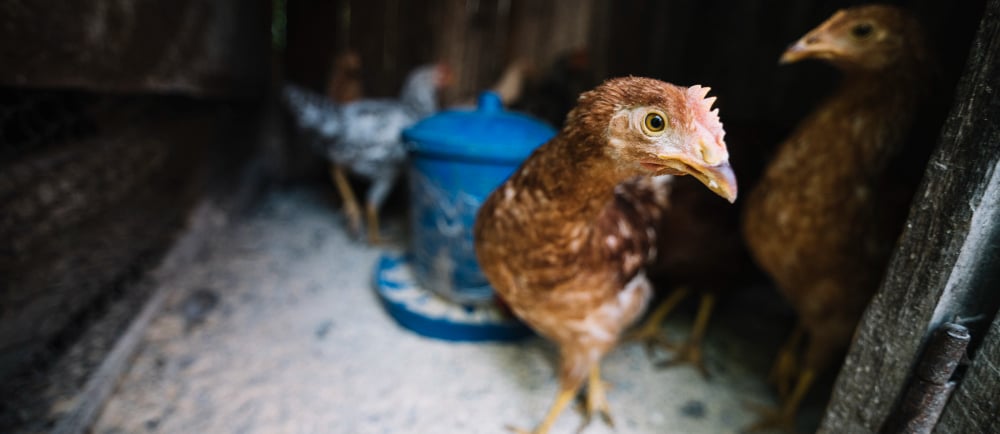Understanding Bird Flu: History, Impact, and Recent Outbreak in India 2025
Everything you need to know about the recent Bird Flu outbreak.


What is Bird Flu?
Bird flu, scientifically known as avian influenza, refers to a viral infection primarily affecting birds, particularly domestic poultry. This illness is caused by various strains of the influenza virus, categorized under two main types: high pathogenic avian influenza (HPAI) and low pathogenic avian influenza (LPAI). Among these strains, H5N1 and H7N9 are particularly noteworthy and pose significant risks to both avian and human health due to their potential for severe outbreaks.
The H5N1 strain became widely recognized following a series of outbreaks in Asia, Europe, and Africa, leading to substantial mortality in domestic birds and raising concerns about its transmission to humans. Similarly, H7N9 emerged as a public health threat in China, with reports of severe respiratory illness and fatalities among humans who were in contact with infected birds. Both strains of the virus are characterized by their ability to mutate, complicating efforts for control and vaccination.
Bird flu is transmitted among birds primarily through direct contact or via contaminated environments, such as water, feed, and equipment. Infected birds can shed the virus through their saliva, nasal secretions, and feces, facilitating the spread of the disease within flocks and across greater distances. While avian influenza predominantly affects birds, it can also infect humans, typically through close contact with infected poultry or environments where the virus exists.
In humans, symptoms of bird flu may resemble those of seasonal influenza and can include fever, cough, sore throat, muscle aches, and fatigue. Severe cases can lead to pneumonia, acute respiratory distress syndrome, or even death, especially in individuals with underlying health conditions. Understanding the dynamics of bird flu and its transmission pathways is critical for both public health initiatives and biosecurity measures in poultry farming.
Historical Context of Bird Flu
The history of bird flu, primarily caused by avian influenza viruses, dates back several decades, with the first significant recognition emerging in the late 1990s. The H5N1 strain, identified in Hong Kong in 1997, marked a pivotal moment, as it was linked to severe illness in humans. This outbreak led to the culling of infected birds and heightened awareness regarding the potential zoonotic transmission of the virus.
Subsequent outbreaks of H5N1 spread across Asia, Europe, and Africa throughout the early 2000s, impacting poultry populations extensively. The virus's persistent presence in these regions raised alarm within the international community, prompting a coordinated response from governments and health organizations. The World Health Organization (WHO) and the Food and Agriculture Organization (FAO) established frameworks for monitoring and controlling outbreaks, reinforcing biosecurity measures and vaccination programs for domestic birds.
By the mid-2000s, the ongoing threat of H5N1 had generated significant media attention and concern about a potential pandemic. The repercussions of these outbreaks stretched beyond avian populations, leading to economic losses in the poultry industry and food security issues in affected regions. Health officials advised the public on best practices to mitigate risks, highlighting the importance of early detection and reporting of unusual bird deaths.
In the years that followed, the emergence of additional strains, such as H7N9 and H5N8, continued to underscore the need for vigilance in monitoring avian influenza. Each outbreak prompted assessments of existing health infrastructure and collaborative efforts to reinforce disease preparedness. Countries implemented strict biosecurity protocols to protect poultry, while researchers focused on studying the evolution of the virus and its transmission dynamics to better understand the overall impact on human health.
Impact of Bird Flu on Humans and Animals
Bird flu, primarily caused by avian influenza viruses, poses significant health threats to both humans and animals. The zoonotic nature of these viruses allows for easy transmission from birds to humans, leading to severe respiratory illnesses. Although the incidence of human infection is relatively low, it can result in high mortality rates among affected individuals, particularly those who have close contact with infected birds. The H5N1 and H7N9 strains are notable for their ability to infect humans, causing outbreaks in various countries.
From an economic standpoint, bird flu has far-reaching implications for the poultry industry. Outbreaks often necessitate mass culling of infected flocks, drastically reducing available livestock and disrupting production. The resultant loss in revenue not only affects poultry farmers, but it also reverberates through the supply chain, influencing markets and consumer prices. Furthermore, the implementation of stringent biosecurity measures, while essential to controlling the spread, incurs additional operational costs for farmers.
Ecologically, bird flu can impact wild bird populations as well. The virus's transmission among avian species can lead to declines in certain populations, thereby disrupting local ecosystems. Infected wild birds can serve as reservoirs for the virus, further complicating management strategies. This interplay between domestic and wild bird populations necessitates an integrated approach to surveillance and control strategies.
Public health measures, including vaccination campaigns for poultry and monitoring of potential human cases, are critical to mitigate risks associated with bird flu. However, healthcare systems often face challenges in responding effectively to these outbreaks, including resource limitations and public awareness factors. The complexity of managing bird flu underscores the need for coordinated efforts among governments, health organizations, and the agriculture sector to effectively address the risks posed by this virus to human and animal health.
The 2025 Bird Flu Outbreak in India: Areas Affected and Precautionary Measures
In 2025, India faced a significant outbreak of avian influenza, commonly known as bird flu, affecting various states across the country. The outbreak was first detected in the southern regions, specifically in Maharashtra, where poultry farms reported an alarming increase in mortality rates among domestic birds. Following these initial reports, the infection rapidly spread to parts of Andhra Pradesh, Telangana and Madhya Pradesh, leading to widespread concern among both farmers and public health officials. Not only were poultry farms severely impacted, but cases were also confirmed in several wild bird populations, which raised alarms over potential zoonotic transmission to humans.
As authorities sprang into action, the scale of the outbreak necessitated a comprehensive response. Public health officials implemented various measures to control the spread of the virus, including culling infected birds and establishing containment zones. Simultaneously, strict monitoring was employed to assess the health of surrounding avian populations and to prevent further infection. The Government of India, in collaboration with state health departments, developed an extensive vaccination strategy aimed at protecting domestic poultry from future outbreaks. Vaccination campaigns were rolled out swiftly, focusing on both healthy birds and those deemed at risk within the affected regions.
Furthermore, biosecurity protocols were emphasized to mitigate the risk of infection. Farmers were urged to adopt stringent hygiene practices on their farms, such as restricting access to non-essential personnel and implementing regular health checks for their flocks. Awareness campaigns were also launched to educate the public regarding signs of bird flu in both domestic and wild birds, encouraging immediate reporting of suspected cases. As the situation evolved, the concerted efforts of public health officials, veterinarians, and poultry farmers aimed to safeguard both animal and human health amidst this challenging outbreak.
